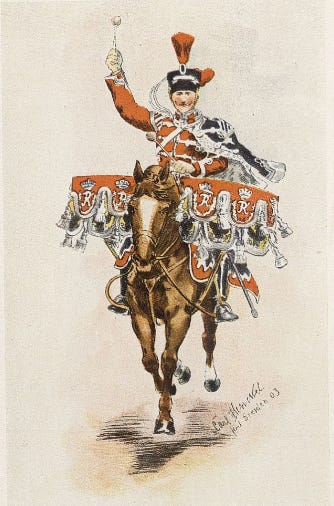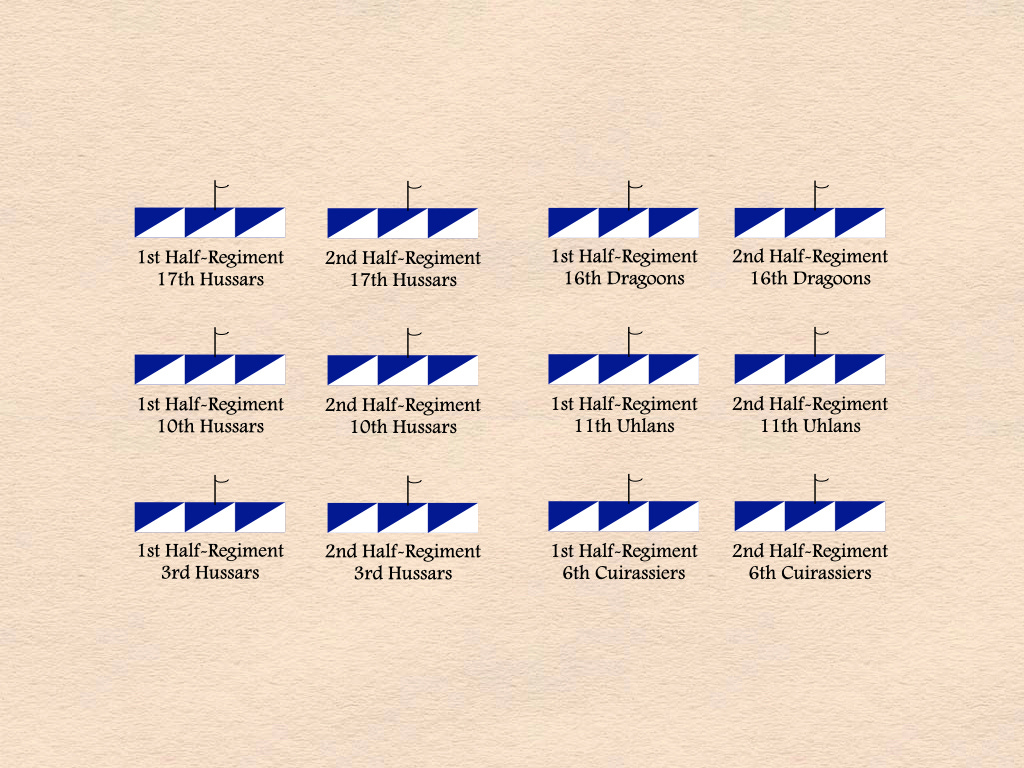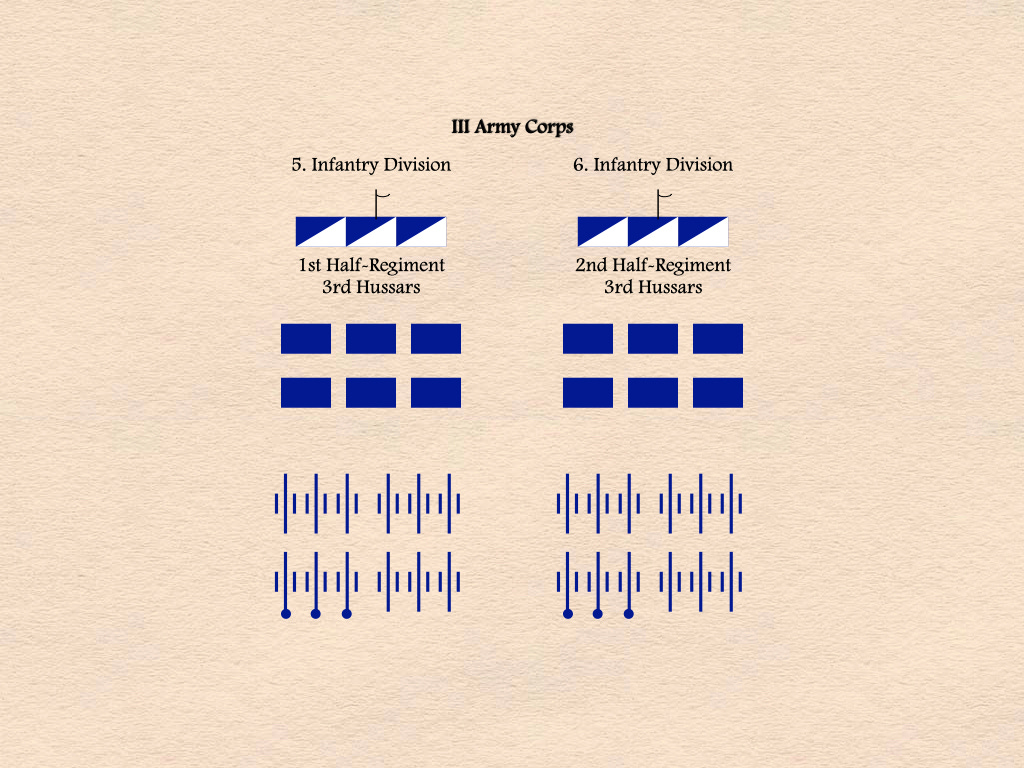Cavalry of Active Infantry Divisions
The Mobilization of German Cavalry in 1914
On the eve of the First World War, the armies of the German Empire possessed one hundred and ten regiments of cavalry. Though variously styled as dragoons, cuirassiers, light horse, heavy horse, uhlans, hussars, and mounted rifles, each of these regiments was, in terms of organization, equipment, and training, interchangeable with any other cavalry regiment in the German armies.
Upon mobilization, sixty-six cavalry regiments reported for duty with cavalry divisions. Forty-four found homes as the organic reconnaissance units of infantry divisions. Six underwent a process of rapid expansion before being split into matched pairs of “half regiments.”
Each peacetime cavalry regiment consisted of five squadrons. Upon mobilization, one hundred and four regiments designated one of these squadrons (which one varied from one regiment to another) as its Ersatz squadron and went to war with the other four. Six regiments, however, received a sufficient number of additional officers and men to form a total seven squadrons.1 Of these, three would be assembled into one half-regiment [Halbregiment], three would join a second half-regiment, and one would stay behind as the training and replacement unit for both half-regiments.
The half-regiments were distributed, at a rate of one half-regiment per division, among the six active infantry divisions that lacked division reconnaissance units. This was done in a way that gave each of the two infantry divisions of an army corps with one of the half-regiments mobilized by a single peacetime regiment. Thus, for example, each of the half-regiments of the 3rd Hussar Regiment was assigned to one of the infantry divisions of the III Army Corps.
Sources: This post is based on data gleaned from the organizational appendix to the first volume of the German official history; Hermann Cron (C.F. Colton, translator) Imperial German Army: Organization, Structure, Orders-of-Battle (Solihull: Helion, 2002); and Löbell's Jahresberichte über das Heer-und Kriegswesen [Löbell’s Military Matters and Warfare Annual], 1913, pages 12 and 13.
The 3rd Hussar Regiment, for example, incorporated 500 additional men in the course of mobilization. Unfortunately, the regimental history only tells us that 458 of these reinforcements came from Berlin. Graf Christian zu Rantzau, Geschichte des Husaren Regiments von Zeiten (Brandenburgisches) Nr. 3 (Berlin: Gerhard Stalling, 1930) page 41





